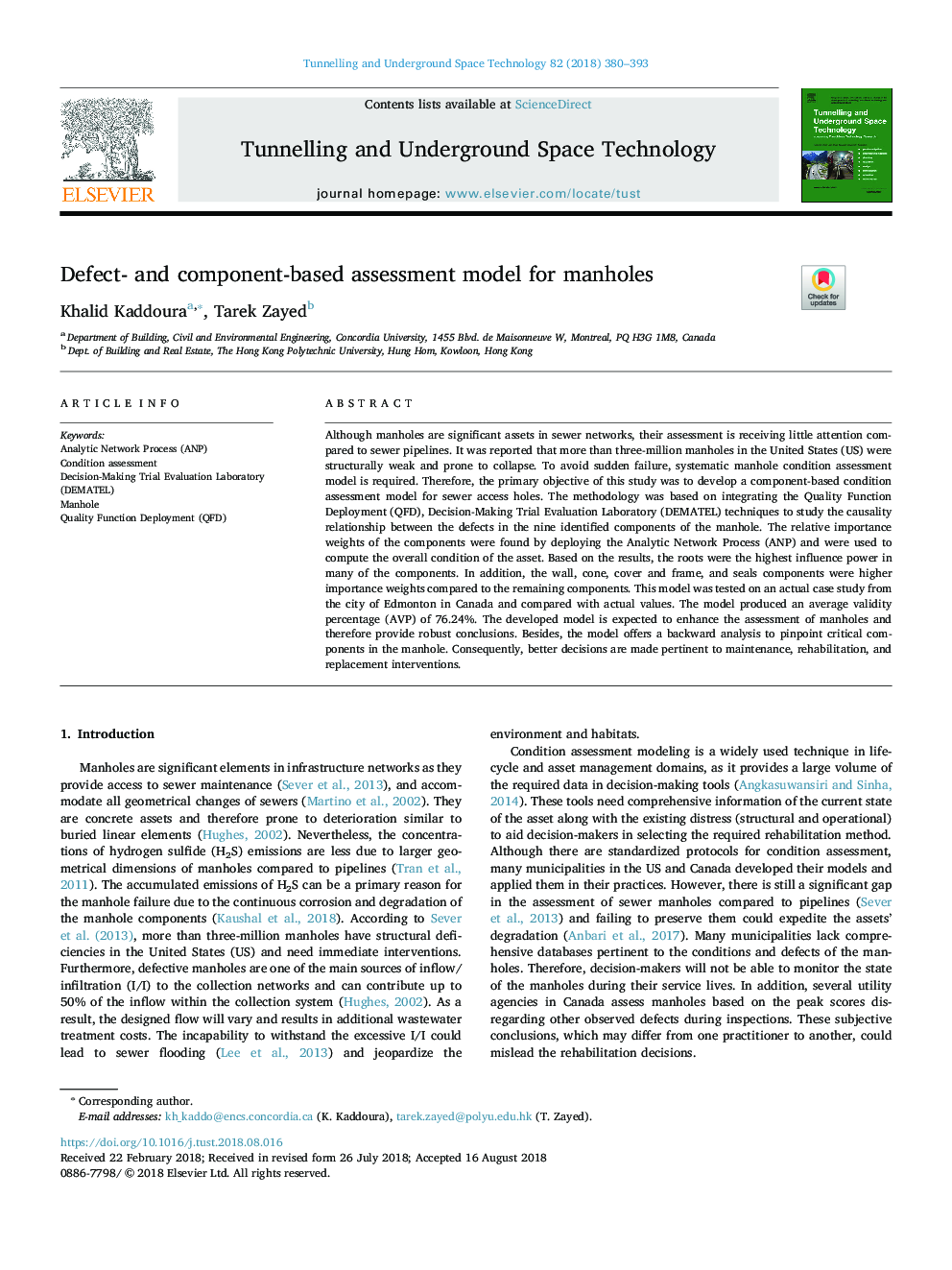| Article ID | Journal | Published Year | Pages | File Type |
|---|---|---|---|---|
| 11001366 | Tunnelling and Underground Space Technology | 2018 | 14 Pages |
Abstract
Although manholes are significant assets in sewer networks, their assessment is receiving little attention compared to sewer pipelines. It was reported that more than three-million manholes in the United States (US) were structurally weak and prone to collapse. To avoid sudden failure, systematic manhole condition assessment model is required. Therefore, the primary objective of this study was to develop a component-based condition assessment model for sewer access holes. The methodology was based on integrating the Quality Function Deployment (QFD), Decision-Making Trial Evaluation Laboratory (DEMATEL) techniques to study the causality relationship between the defects in the nine identified components of the manhole. The relative importance weights of the components were found by deploying the Analytic Network Process (ANP) and were used to compute the overall condition of the asset. Based on the results, the roots were the highest influence power in many of the components. In addition, the wall, cone, cover and frame, and seals components were higher importance weights compared to the remaining components. This model was tested on an actual case study from the city of Edmonton in Canada and compared with actual values. The model produced an average validity percentage (AVP) of 76.24%. The developed model is expected to enhance the assessment of manholes and therefore provide robust conclusions. Besides, the model offers a backward analysis to pinpoint critical components in the manhole. Consequently, better decisions are made pertinent to maintenance, rehabilitation, and replacement interventions.
Related Topics
Physical Sciences and Engineering
Earth and Planetary Sciences
Geotechnical Engineering and Engineering Geology
Authors
Khalid Kaddoura, Tarek Zayed,
